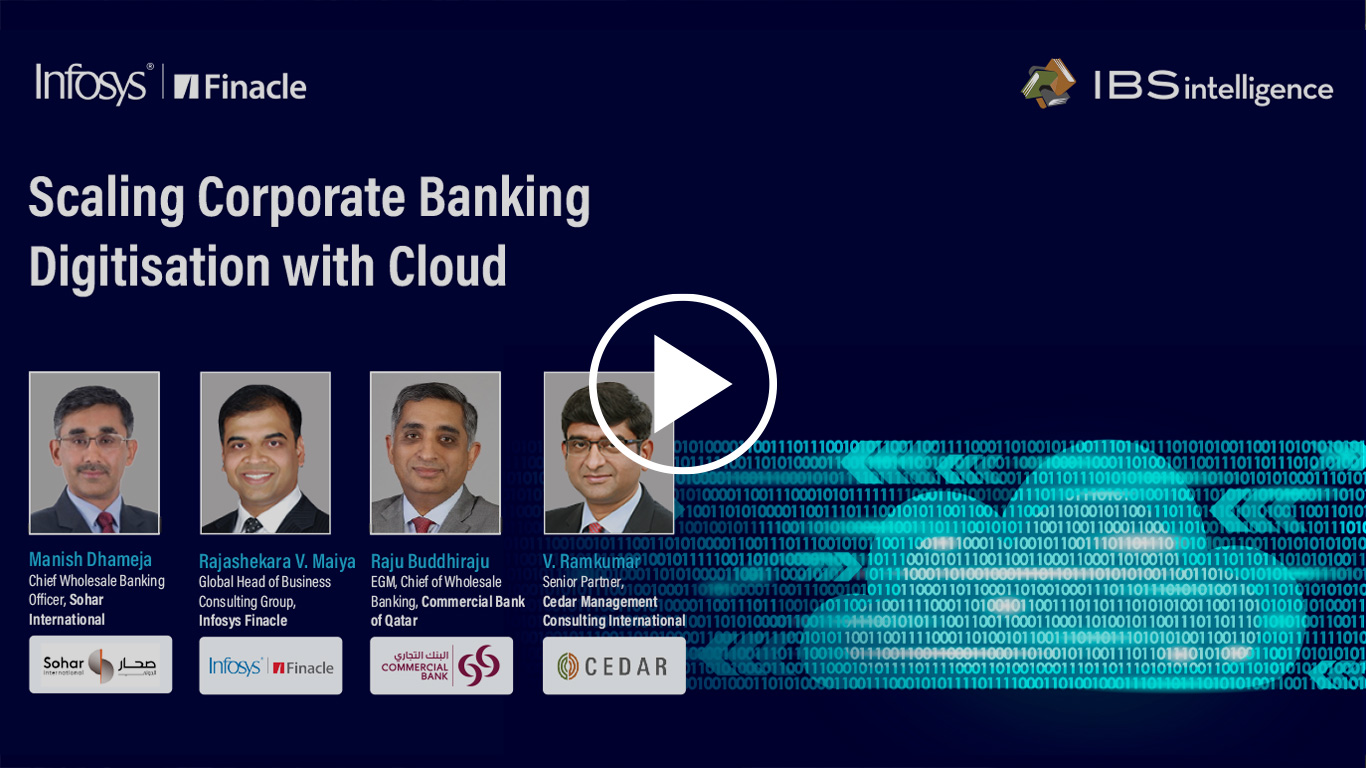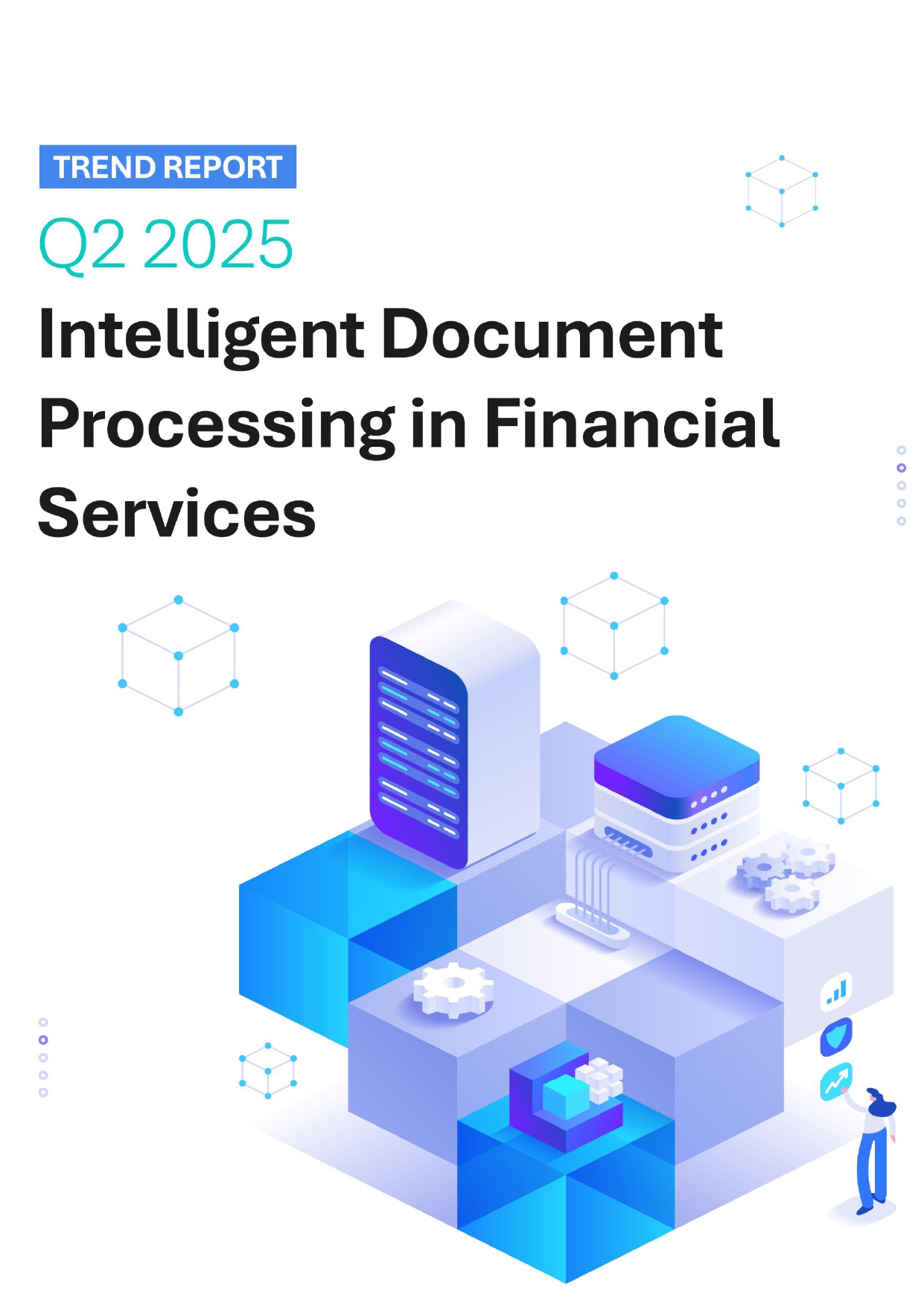 Back
Back
Scaling Corporate Banking Digitisation
A webinar in partnership with Infosys Finacle, held on February 11, 2021, with 150+ participants.
The blurring difference between retail and wholesale banking
The digital transformation journey for corporate banks has been in some ways similar to that of retail banks. In the last 4 years, the one factor that has really helped retail banking to scale on the digital transformation journey is the emergence of FinTechs, RegTechs, and InsurTechs trying to get into the banking business. At one particular time, they were gobbling up 30% of the banking deposits, 25% of the banks’ revenue and in cases such as niche payments or peer-to-peer wallet-based transactions, they were taking away almost 50% of the transactions. In India alone, more than 2 billion transactions in the retail space happen through the Unified Payment Interface, of which, over 60% of transactions are carried out by non-banks like Google pay, WhatsApp, PhonePe and Paytm. While this is happening in retail banking, BigTechs like Amazon have begun unbundling corporate banking as well.

Amazon has started to offer corporate banking services to its partners, including lending, insurance, extending revolving credit lines for vendors, and end-to-end supply chain financing for its network. It has already granted over $10 billion in loans to more than 20,000 SMBs but this is just the start. It is seeking to take the challenge to banks with better user experience, simplicity and ease of doing business. In different pockets of the world, Amazon has started creating a marketplace with their seller network, targeting almost 340,000 SMBs tying up with organizations like Flexiloans. They plan to scale this globally, through their access to the supplier network, which speeds up loan approvals. Amazon will soon lend at 150 to 250 basis points lesser than market rate because they don’t have infrastructure investment or branch network and everything is digitized, which are very attractive terms for SMBs.
In parallel, the debilitating impact of the pandemic from last year, is taking its toll on revenues for corporate banks. This is forcing banks to look for newer sources of income, while dealing with shrinking profitability and rising bad loans. The biggest risk, however, lies in the unprecedented twin challenges of liquidity and solvency due to the pandemic. The impact from all these challenges is forcing a business model reimagination in banks, making them accelerate their digital transformation agendas on an urgent basis, at scale.
The differences between retail and wholesale banking are blurring, except for the clientele that they service, in the sense of both moving towards a marketplace model. By setting up digital marketplaces or platforms, banks can be far more involved in client journeys that put them in a better place to service their customers in multiple ways. An overwhelming majority of unicorn companies across the world have platform business models, and it is time for banks to move from pipeline-based models to platform-based ones, like DBS Bank in Singapore.
EXCERPTS FROM THE PANEL DISCUSSION
Speaker 1: Manish Dhameja, Chief Wholesale Banking Officer, Sohar International
Speaker 2: Raju Buddhiraju, EGM, Chief of Wholesale Banking, Commercial Bank of Qatar
Speaker 3: Rajashekara V. Maiya, Global Head of Business Consulting Group, Infosys Finacle
Moderator: V. Ramkumar, Senior Partner, Cedar Management Consulting International
Effect of pandemic on the accelerated of digitization in Corporate Banks
Manish: The pandemic had indeed accelerated the digital agenda, both for imbibing technology by individuals, and corporates. This has also actually helped banks to use this opportunity to partner with FinTechs, to try and create a much more convenient value-added experience for the client in such a way it becomes cost effective, as well as value accretive.
The right strategy for corporate banks to prioritize and sequence the digitization agenda
Raju: One thing the pandemic has taught businesses across industries and sectors is that you really need to run a very thin cost architecture, if you want to succeed under different conditions. Thin cost structures are only enabled by technology-based solutions. Technology empowers institutions to provide a standardized customer experience to various customers and technologies like the cloud helps companies in moving to an operating expenditure model and scale quickly, which is necessary in disruptive times. With the earlier concerns on moving data to the cloud now cleared even by banking regulators, it is now inevitable that banks move to cloud-based solutions.
Changing expectations from a customer standpoint in corporate banking
Manish: The FinTech revolution has led to increasing customer expectations in a significant way, which has also led to raising the bar for banks to perform in a big way. For corporate banks to be successful, they need to move from a pipeline-based model to a platform-based one, following the principles outlined in SATS – Speed, Accuracy, Transparency and Secure environment. All wholesale banking transactions should pass the SATS test, to have a retail banking like experience. The second principle for corporate banks to consider, is going beyond just lending and being growth partners to their clients, especially in testing times.
This principle can be further extended by providing clients with technology tools, like forecasting tools for liquidity, so that their working capital needs can be reduced. Being a growth partner for a larger customer means not just financing the company, but also financing the company’s ecosystem, including its supply chain and vendors. The final transformation principle would be to become trusted advisors to corporate customers, using the vast storehouse of historical data combined with technology tools available to the bank. Doing all these things would add value to a client and help them leapfrog into actually creating a differential competitive advantage.
Role of blockchain in changing the landscape of corporate banking and digitalization
Raju: International trade is a $16 trillion market per year, but it is mired in bureaucracy, paperwork and multiple other bottlenecks, but the messier the problem, the better chance for disruption. This is where technologies like blockchain and distributed ledgers have potential in speeding up complex transactions, and it also feeds into the need for instant gratification amongst customers.
Getting your corporate customers to walk with you, in your digitalization journey
Manish: How do you align the organisation mindset to the client mindset? I think one first starts with what’s the purpose of the digital agenda and how do I make my business and IT strategy based on the type of client experience I want. For truly successful digital transformation, while employee IQ is important for implementation, employee EQ is more important for servicing client needs.
CLOSING NOTE
Digital transformation in corporate banking has for the most part trailed behind retail banking – but not anymore. It is evolving at an unprecedented pace, thanks to the pandemic catalysing digital transformation across business models, and accelerating technology adoption. The rise of digitally nimble BigTechs and FinTechs offering corporate banking services have further brought in a paradigm shift in digital disruption. Partnerships with FinTechs will remain critical for banks in providing value-added experiences to its corporate clients. Mainstream adoption of advanced technologies such as APIs driven corporate connectivity, Cloud, Blockchain etc. will be crucial to gain flexibility, speed to market, operational efficiencies, and a competitive advantage.
IBSi News

July 14, 2025
Corporate Banking
The Monday Roundup: what we are watching this week | July 14th
Read MoreGet the IBSi FinTech Journal India Edition
- Insightful Financial Technology News Analysis
- Leadership Interviews from the Indian FinTech Ecosystem
- Expert Perspectives from the Executive Team
- Snapshots of Industry Deals, Events & Insights
- An India FinTech Case Study
- Monthly issues of the iconic global IBSi FinTech Journal
- Attend a webinar hosted by the magazine once during your subscription period
₹200 ₹99*/month
* Discounted Offer for a Limited Period on a 12-month Subscription
IBSi FinTech Journal

- Most trusted FinTech journal since 1991
- Digital monthly issue
- 60+ pages of research, analysis, interviews, opinions, and rankings
- Global coverage
Other Related Blogs
May 22, 2025
Why the FinTech boom in MENA has exposed Europe’s tech debt – and how to fix it
Read MoreRelated Reports

Sales League Table Report 2025
Know More
Global Digital Banking Vendor & Landscape Report Q2 2025
Know More
NextGen WealthTech: The Trends To Shape The Future Q4 2023
Know More
Intelligent Document Processing in Financial Services Q2 2025
Know More
